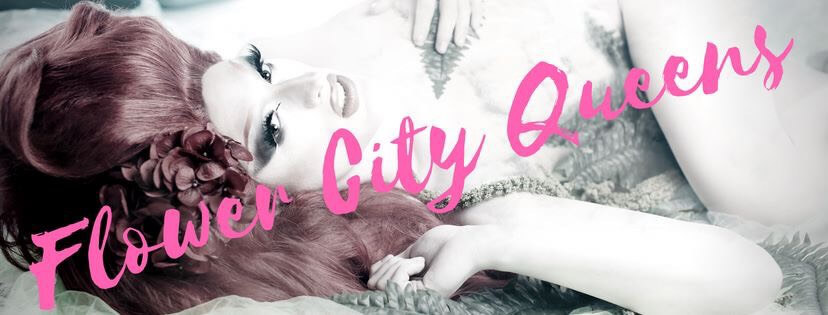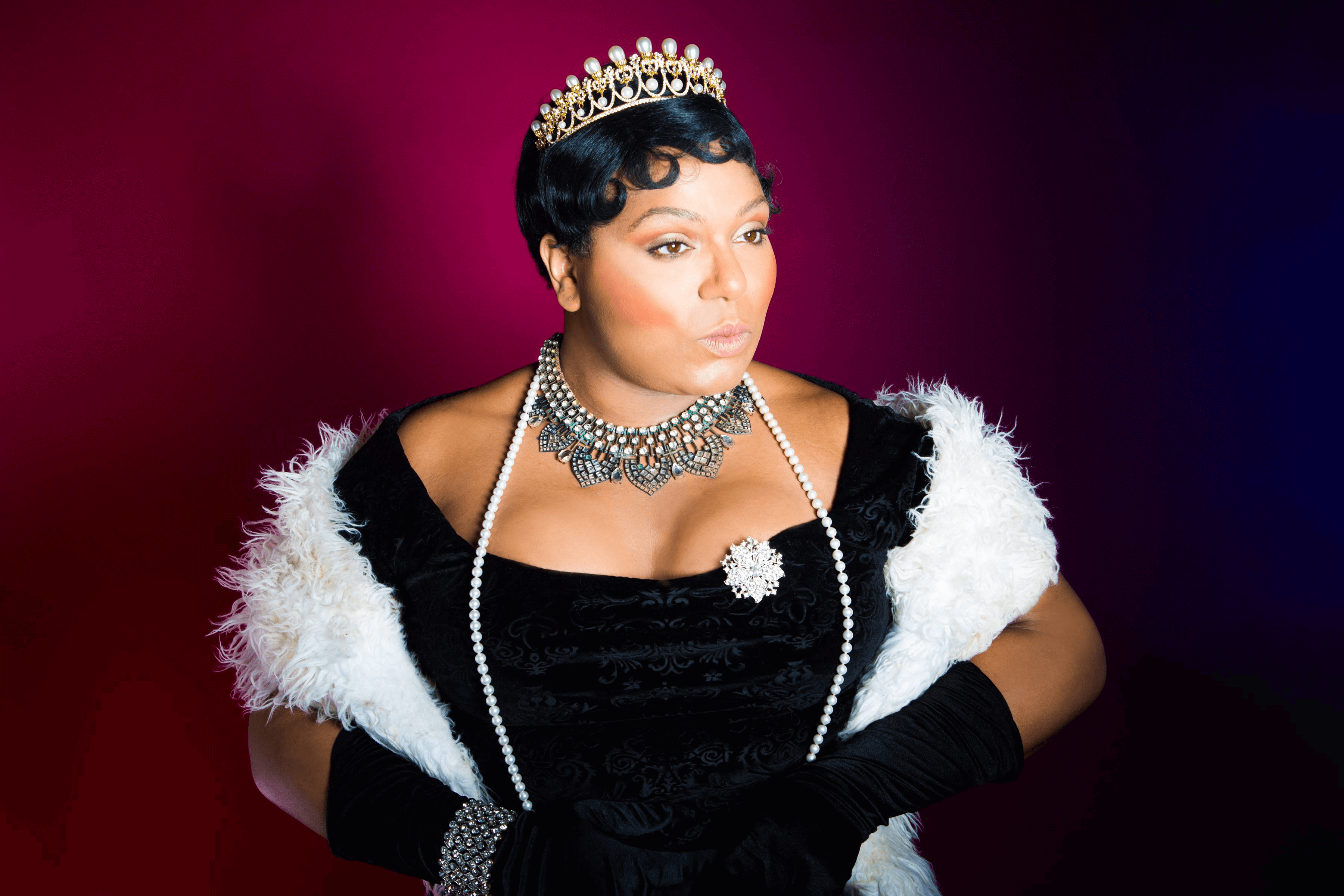

The Herstory of Drag & its Place in Rochester
By Marie-Adélina de la Ferrièr
Published November 9, 2018.
Drag. The very word conjures images of performers in larger-than-life hair and makeup, not to mention their out-of-this-world personalities. We are accustomed to watching performers on television and online. How far we have come – technologically, and socially. For many, there was a time that drag was performed in a limited space. And, for the most part, deemed unnatural. While many around the world perform rites and rituals that reinforce our or womanliness, drag runs in opposition to that notion. Behind the makeup and beyond the stage, at its very root, drag is an act of defying societal standards.
Though we identify it today for its entertainment value, drag has come a long way. The art of impersonation had mystical properties. In Antiquity, deities impersonated women and men to intermingle with mere mortals. In one Norse myth, the overly manly Thor attempts to retrieve his hammer, Mjolnir, from a giant. To do so, the god of thunder dresses up as the love-goddess Freyja and agrees to marry the giant. Despite eating an entire ox during the wedding feast, Thor’s impersonation did not fool the giant. It wasn’t just gods who impersonated. Ruling in 1400s BCE, the Egyptian queen Hatshepsut is one of the most well-known rulers from that time. Not just for being a badass queen, but one of the first known figures to use impersonation as political power. Images in her early reign depict her as a woman of royal rank. Over time, however, the images begin to shift. She is shown wearing the false beard, the symbol of royal power, as well as the traditional headdress. Whereas queens were depicted in linen dresses, images of Hatshepsut shows her wearing the shendyt or kilt and bare-breasted. In a time when women rulers were rare, Hatshepsut deliberately depicted herself as the world’s first drag king to reinforce her position as divine ruler.
The art of impersonation is not only a Western construct. We see the artform practiced in many Eastern societies. One of the most popular Chinese folktales is of Hua Mulan. Known today due to the ‘90s film named after her, the film is adopted from the Ballad of Mulan. Like Joan of Arc, she dons male armor at a time of great national instability and fights courageously. But it is not until the end of the ballad that her fellow soldiers discover Mulan is a woman. Meanwhile, female impersonators were often found not in tales but on stage. Today’s geisha may be the epitome of elegance and grace, but the earliest known practitioners were, in fact, men. In medieval Japan, the taikomochi was the highest form of male geisha performance, with the ‘art’ of impersonation included singing, playing instruments, and dancing. But by the 1700s they were replaced with female geishas, giving birth to the modern geiko movement. Sadly, like their female counterparts, there are few ‘traditional’ taikomochis left in Japan.
The word drag has its origins in Shakespearean England. True, women were not allowed to perform on the stage. But Shakespeare took a keen interest in gender fluidity. In Twelfth Night, Viola falls in love with Duke Orsino, who is in love with Countess Olivia, who is in love with Sebastian who, really, is Viola in drag as her twin brother. Of course, the writer lived at a time when his monarch was often questioned for her abilities to lead a nation. A queen of a different sorts, Elizabeth I was a woman who desired to be seen by her subjects as carrying both masculine and feminine attributes. Despite being a woman, Elizabeth’s desire to have the “heart and stomach of a king” endeared her to her Englishmen and became an icon in later centuries. By the time women take to the stage in the 1600s, Portuguese drag queens organized the first drag balls. These parties remained secretive as crossdressing – off the stage, at least – remained a heinous crime. Drag takes its modern form in the late-1800s. Vaudeville acts included impersonators who marveled audiences with their charm and beauty. The first known drag merchandise came in the form of photographs, bought by many who marveled at them while on the stage. While these performers could never afford gowns by the world’s first haute couturier, Charles Frederick Work, they nevertheless looked regal and glamorous for the camera. Among the early performers was Madam Pattrini. She not only resembled the curves and features of a woman but, apparently, could sing at a higher vocal range. Born B. Morris Young, the child of the founder of the Latter Day Saints movement, it remains unknown whether Pattrini’s father approved. But by the turn of the twentieth drag is popular, if not entirely mainstream, among the educated and elite. Florin, a well-known French performer (by comparison, the RuPaul of her time) was feted by Parisian society. Drag balls were increasingly attended by the rich and fabulous. Dressed in their finest garbs, men and women danced with enchanting beauties or remained entranced from balconies. Unfortunately, the 1930s and 40s saw drag – and our community – being forced increasingly ‘underground’. And, for most of the 1900s, drag remained relegated to private clubs and identified as ‘subculture.’
Drag slowly re-enters mainstream culture due in no small feat to Divine. Born Harris Glenn Milstead, Divine became part of the counterculture movement of the 1960s and, if I may be bold, the mother of modernist drag. Working with artists and filmmakers, her feature in John Waters’s Pink Flamingo became an instant cult classic and gained her a following in mainstream culture. By the time of Divine’s untimely death in 1988, another figure emerges to take hold on the drag community. Born in 1960s San Diego, RuPaul Charles also began in subculture art by making low-budget films. A fixture in the Atlanta drag scene, RuPaul gains popularity through public access television shows and, later, appearances in documentaries and other film projects. The 1993 hit “Supermodel” becomes popular among queer and straight communities. The ‘Oprah’ of postmodern drag, RuPaul appeared on various popular shows and films throughout the ‘90s in and out of drag, not to mention developing products from dolls to candy. While RuPaul has contributed to postmodern drag scene, Drag Race has brought drag to a wider audience and has since made a lasting impact on the ‘millennialist’ drag scene. Campy, fishy, and everything in between, drag is the medium in which art, performance, and identity converge. As RuPaul herself said, ‘everyone is born naked; the rest is drag.’
Meanwhile in Rochester, one of the oldest running drag pageants in the United States, Miss Gay Rochester is four years away from celebrating its 50th anniversary. The pageant began in 1972 – the same year the Gay Liberation Front left UR campus to become the GAGV (today’s Out Alliance). The 21st century saw the emergence of drag clubs being popular among a young generation regardless of identities. Muther’s (today’s Skylark Lounge), Tilt Nightclub (now defunct), and Nasty D’s (now 140 Alex) launched the careers of many recognizable faces in the community. While bars came, changed, and went, Miss Gay Rochester remained strong. And, every November, the community converges to celebrate the pomp and pageantry (pun intended) of drag. Of course, we should not underestimate the role of RuPaul’s hit show. A few months after Miss Gay Rochester crowned its 35th titleholder, RuPaul’s Drag Race was broadcast to the world, bringing the art form to a global audience. Veronica Lace, the 44th titleholder, is among the latest in a long line of titleholders who continue to act as trailblazers and role models to a new generation of aspiring performers. While both Divine and RuPaul were making impacts on a global scale, Miss Gay Rochester has created a standard in which the drag is seen as a medium in which art, performance, and identity converges.
Personally, drag has also allowed me to explore my identity, meet some of the most fascinating people, and has provided unthinkable opportunities. Drag has also taught me that it is a duty to give back to the community whenever possible. Flower City Queens is the first-ever calendar featuring some of Rochester’s best performers. It features Mrs. Kasha Davis, Darienne Lake, Aggy Dune, Miss Deelicious, Wednesday Westwood, DeeDee DuBois and many others. It is also about giving back to our community. Half of the proceeds from each calendar sold will go to the Center’s For Youth’s By Their Side, a safe haven for LGBTQ+ homeless youth. It is a calendar that not only gives back to the community, but continues on the tradition of celebrating our drag herstory.
We invite you to join us for the Flower City Queens calendar release party on Friday, November 16th at Bachelor Forum. RSVP via Facebook.


Marie-Adélina de la Ferrière is Creative Director of Flower City Queens and a longtime resident of the City of Rochester. After attaining her BS and MA in History at The College at Brockport, she returned to complete a second Master’s program in Public Administration. A Park Ave resident, she loves living, working, and playing in Rochester’s downtown renaissance.


